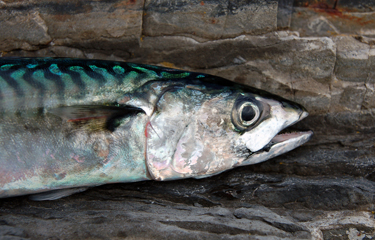The International Council for the Exploration of the Sea (ICES) has raised its 2020 recommended total catch for Northeast Atlantic mackerel by nearly 20 percent to 922,064 metric tons (MT), up from 770,358 MT in 2019.
ICES provides data-based scientific advice for catch totals for a variety of species in the North Atlantic. However, a lack of agreement on stock allocation between countries fishing for mackerel in the Northeast Atlantic has led to an overall uptake above ICES catch level recommendations. That, combined with the absence of a long-term management plan, has resulted in the Marine Stewardship Council revoking its certification for the fishery. Most Northern European countries are involved in the fishery in varying capacities.
A higher spawning-stock biomass, with good recruitment of two- and three-year-old fish, along with a downward revision of fishing mortality, led ICES to increase its recommended total catch.
In September 2018, ICES warned that the Northeast Atlantic mackerel stock had shrunk below a sustainable level. It attributed the decline in the stock to overexploitation, but more recent studies show “unfavorable environmental conditions” are blunting the stock’s recovery. In its 1 October update, which included its catch recommendation, ICES called for continued protection of the population’s spawning component in the North Sea.
Despite concerns, ICES has since revised its estimate of the mackerel stock to above sustainable levels, which concurs with the industry’s own observations, according to the report.
“The pelagic industry has reported encountering large shoals of mackerel over the entire distribution area for the past 11 years. Based upon these observations, the industry considers that the stock abundance has significantly increased over those years and remains at a high level and this increase in the stock is not confined to one area or observed by only one fleet,” the report said. “The industry has noted signs of increased abundance of smaller fish in recent years, particularly in 2014, 2015, 2017, 2018, and again at the start of 2019. The industry report that mackerel is also caught in substantial amounts outside of the directed mackerel fishery areas.”
In a separate report, ICES raised its maximum catch recommendation for blue whiting in the Northeast Atlantic to 1,161,615 MT for 2020, up from 1,143,629 MT in 2019, but down from 1,387,872 MT in 2018.
Photo courtesy of Shutterstock







